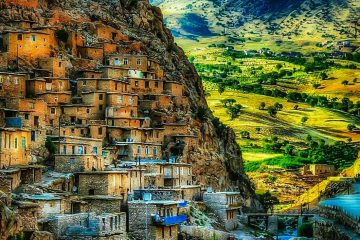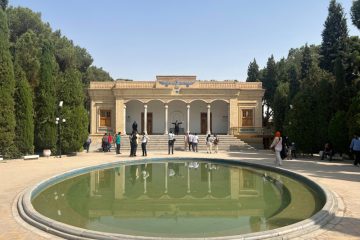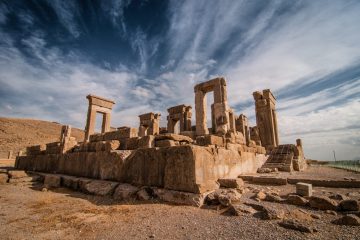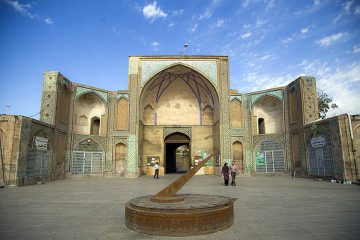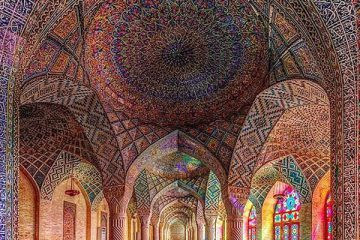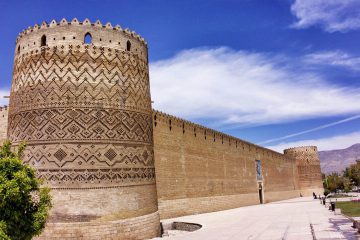
Naqsh-e Jahan Square
Welcome to Isfahan’s most enchanting attraction, Naqsh-e Jahan Square! Brace yourself for a journey back in time as you discover this historical gem. Spanning over 80,000 square meters, this UNESCO World Heritage site is a true testament to the grandeur and architectural mastery of the Persian Empire.
Step foot onto the square and be awestruck by the breathtaking sights around you. From the mesmerizing Shah (Imam) Mosque, adorned with intricate tilework and majestic blue domes, to the regal Ali Qapu Palace, with its stunning music room and panoramic views, every corner of Naqsh-e Jahan Square is a feast for the eyes.
Immerse yourself in the vibrant energy of this bustling hub, where locals and tourists alike gather to shop, socialize, and soak in the rich history. Marvel at the craftsmanship of local artisans as you peruse the traditional bazaars, filled with exquisite Persian carpets, dazzling jewelry, and authentic handicrafts.
Whether you’re a history enthusiast, an architecture aficionado, or simply a curious traveler, Naqsh-e Jahan Square promises to leave an indelible mark on your heart. Prepare to be captivated by its allure and discover the beauty within.
Historical significance of Naqsh-e Jahan Square
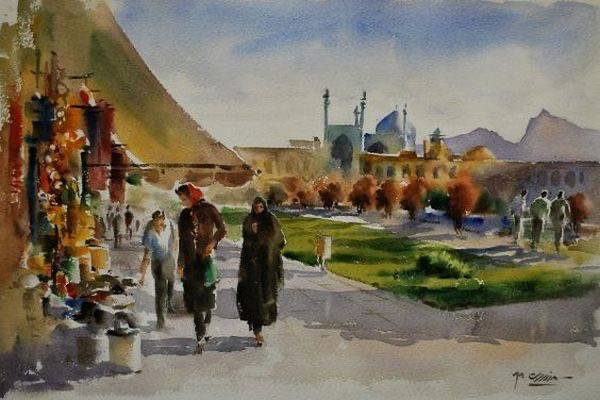
Naqsh-e Jahan Square, also known as Shah (Imam) Square, holds immense historical significance. Built in the 17th century during the Safavid dynasty, it served as the central hub of the empire’s capital, Isfahan. The square was designed to showcase the empire’s power and wealth, and it still stands today as a remarkable testament to Persian architecture and urban planning.
At its heart, the square symbolized the Safavid dynasty’s political and religious authority. It was not only a place for public gatherings and ceremonies but also a center for commerce and trade. The square’s name, Naqsh-e Jahan, translates to “Image of the World,” reflecting its grandeur and importance in the Persian Empire.
Architectural wonders of Naqsh-e Jahan Square
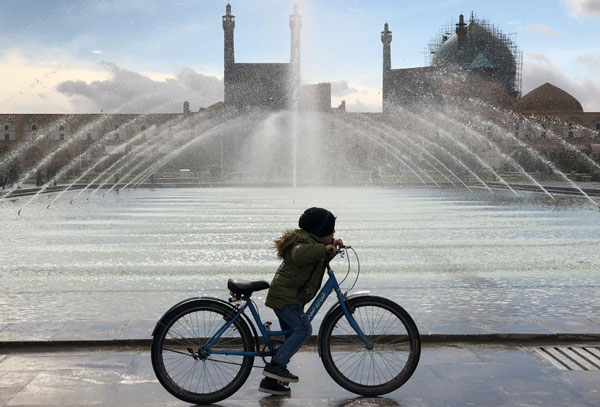
Naqsh-e Jahan Square’s architectural wonders are breathtaking. The square is surrounded by splendid buildings that showcase Persian architecture.
One of the most prominent structures is the Imam Mosque, also known as the Shah Mosque. Its stunning turquoise domes and intricate tilework make it a masterpiece of Islamic architecture. Step inside, and you’ll be mesmerized by the prayer hall’s beauty, adorned with calligraphy and colorful motifs.
Another architectural gem is the Sheikh Lotfollah Mosque, located on the eastern side of the square. Unlike the Imam Mosque, it doesn’t have a minaret or a courtyard. However, its stunning dome, which changes color throughout the day, leaves visitors in awe. The interior is equally impressive, with intricate tilework and striking muqarnas (stalactite-like decorations) adorning the walls and ceiling.
On the western side of the square stands the Ali Qapu Palace, a majestic structure that served as the royal residence of the Safavid rulers. Climb up the winding staircase to the top floor, and you’ll find the famous music room. This is where court musicians perform for the royal family. From the balcony, enjoy panoramic views of the square and the surrounding city.
The Grand Bazaar: A shopper’s paradise
No visit to Naqsh-e Jahan Square is complete without exploring the Isfahan Grand Bazaar, a vibrant and bustling marketplace that has been operating for centuries. This labyrinthine maze of narrow alleys is a shopper’s paradise, offering a wide range of goods and souvenirs.
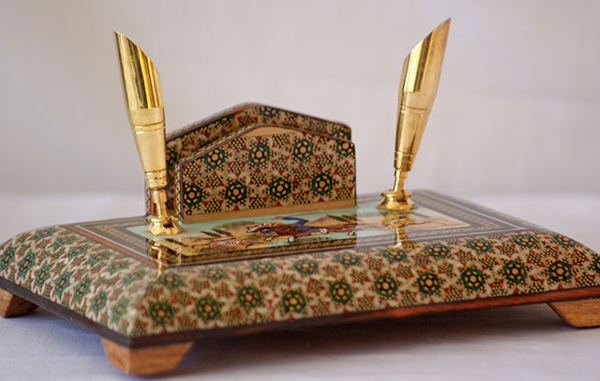
As you navigate through the bazaar, you’ll be greeted by the tantalizing aroma of spices, the vibrant colors of Persian carpets, and the glimmer of gold jewelry. Take your time browsing through the shops and interacting with the friendly shopkeepers. Don’t forget to haggle for the most reasonable prices and take home a piece of Persian craftsmanship.
Imam Mosque: A masterpiece of Persian architecture
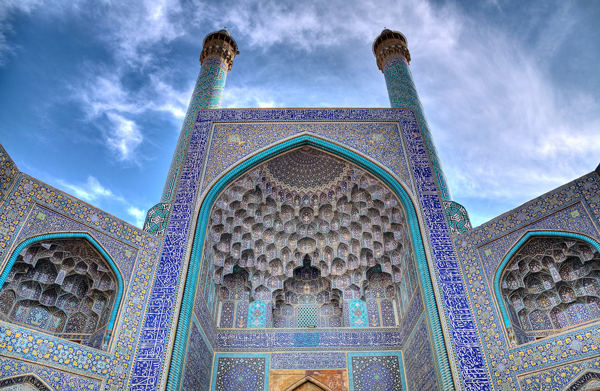
Imam Mosque, also known as Shah Mosque, is one of the most iconic landmarks in Naqsh-e Jahan Square. Its grandeur and architectural splendor make it a must-visit for Persian history and culture enthusiasts.
The mosque was commissioned by Shah Abbas I, the fifth Safavid ruler, and its construction began in 1611. It was designed by Ustad Ali Akbar Isfahani, a renowned architect of the time. The intricate tilework, calligraphy, and geometric patterns that adorn the mosque’s exterior and interior testify to Persian craftsmen’s mastery.
Upon entering the mosque, you’ll be greeted by a vast courtyard surrounded by arched arcades. The central dome, adorned with vibrant blue tiles, dominates the skyline. Step inside the prayer hall, and you’ll be amazed by the stunning mihrab (prayer niche) and the intricate details that cover every inch of the space.
Sheikh Lotfollah Mosque: A hidden gem of Isfahan
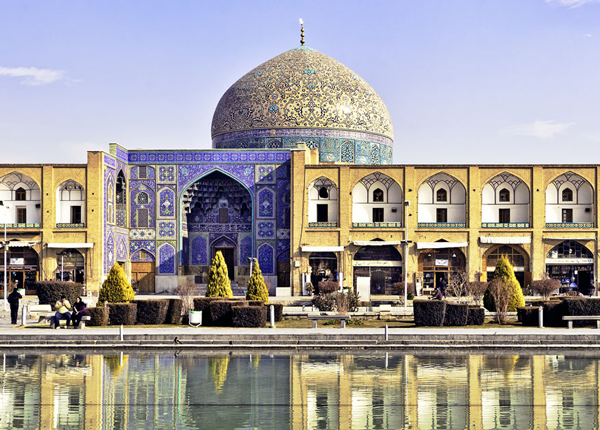
Located on the eastern side of Naqsh-e Jahan Square, Sheikh Lotfollah Mosque is a hidden gem that often gets overshadowed by Imam Mosque’s grandeur. However, its unique architectural features and serene atmosphere make it a must-visit for those seeking tranquility and beauty.
Unlike other mosques in Iran, Sheikh Lotfollah Mosque doesn’t have a minaret or courtyard. It was built as a private mosque for the royal family and served as a place of worship. The mosque’s most striking feature is its dome. This changes color throughout the day, ranging from soft pink in the morning to deep blue in the afternoon.
Step inside the mosque, and you’ll find a peaceful ambiance. The interior is adorned with stunning tilework, intricate patterns, and muqarnas, creating a mesmerizing play of light and shadow. Take a moment to admire the beauty of this hidden gem.
Ali Qapu Palace: The royal residence of Safavid rulers
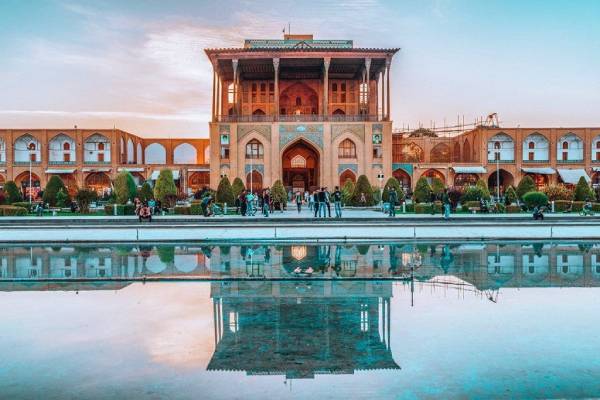
On the western side of Naqsh-e Jahan Square stands Ali Qapu Palace, a magnificent structure that served as the royal residence of the Safavid rulers. Built in the late 16th century, it was not only a residence but also a center for administration and entertainment.
As you enter the palace, you’ll be greeted by a grand staircase adorned with beautiful frescoes. Climb up to the top floor, and you’ll find the famous music room, where court musicians perform for the royal family. The room’s acoustics are so extraordinary that even a whisper can be heard from one corner to the other.
From Ali Qapu Palace’s balcony, you can enjoy panoramic views of Naqsh-e Jahan Square and the surrounding city. Take a moment to soak in the breathtaking scenery and imagine the grandeur of the Safavid court that once resided within these walls.
Exploring the surrounding attractions of Naqsh-e Jahan Square
While Naqsh-e Jahan Square itself is a marvel to behold, the surrounding area offers a wealth of attractions waiting to be explored. Take a stroll along Chahar Bagh Avenue, a tree-lined boulevard that stretches from the square to the historic Khaju Bridge. Admire the picturesque gardens, elegant mansions, and historical sites that line the avenue.
Don’t miss the opportunity to visit Chehel Sotoun Palace, located just a short distance from Naqsh-e Jahan Square. This palace, with its stunning mirrored halls and beautiful frescoes, served as a venue for royal receptions and festivities during the Safavid era.
If you’re interested in Persian art and culture, head to the Armenian Quarter, located near Naqsh-e Jahan Square. Explore the Armenian Vank Cathedral, known for its exquisite frescoes and picturesque courtyard. Immerse yourself in the rich history and cultural heritage of the Armenian community in Isfahan.
Tips for visiting Naqsh-e Jahan Square

1. Timing: Visit Naqsh-e Jahan Square early in the morning or late in the afternoon to avoid crowds and enjoy the excellent photography lighting.
2. Attire: Dress modestly when visiting mosques and religious sites. Women should cover their heads with a scarf and wear long sleeves and pants or a long skirt.
3. Footwear: Wear comfortable shoes, as you’ll be walking on uneven surfaces.
4. Guided Tour: Consider hiring a local guide to learn the history and significance of Naqsh-e Jahan Square and its attractions.
5. Sun Protection: Don’t forget to wear sunscreen, a hat, and sunglasses, as Isfahan can get hot and sunny, especially during the summer months.
Conclusion: Experience the magic of Naqsh-e Jahan Square
Naqsh-e Jahan Square is a true gem that encapsulates the Persian Empire’s magnificence. Its architectural wonders, historical significance, and vibrant atmosphere make it an enchanting attraction that should not be missed.
From the awe-inspiring Imam Mosque and Sheikh Lotfollah Mosque to the regal Ali Qapu Palace and the bustling Grand Bazaar, every corner of Naqsh-e Jahan Square offers an unforgettable experience. Immerse yourself in the rich history, marvel at the architectural splendor, and indulge in the vibrant culture that surrounds this UNESCO World Heritage site.
Prepare to be captivated by Naqsh-e Jahan Square. Book your trip to Isfahan and embark on a journey back in time to discover the beauty and allure of this enchanting attraction.

